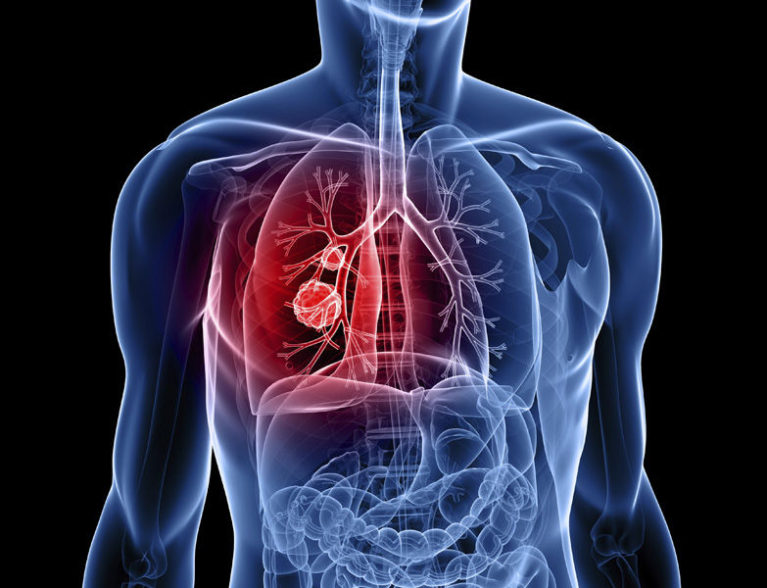
The idea of having to undergo an “electromagnetic navigation bronchoscopy,” or ENB for short, might well be frightening for many people.
Still, in the battle against lung cancer, the ENB is one of the safest and most effective tools available – but it is not available everywhere.
In fact, according to Dr. John Suen, pulmonary disease expert at Indian River Medical Center since 1992, IRMC is “the only facility on the Treasure Coast, except maybe Jupiter, with this technology.”
That technology consists in part of software that utilizes x-rays and CT scans to create a three dimensional image of the lungs on a planning screen that shows the lungs from four different perspectives.
When the procedure is performed, an electromagnetic location board is placed underneath the sedated patient and “three location pads are placed in a triangular configuration on the patient’s chest to enable precise tracking of the locatable guide through the electromagnetic field” as the specialized bronchoscope is inserted into the lungs, according to a 2012 article in the Journal of Thoracic Diseases. The equipment allows doctors to guide the bronchoscope precisely through the maze of air passages to the problem area via real-time images and readings.
The technology is important because according to the Mayo Clinic, “Lung cancer is the leading cause of cancer deaths in the United States, among both men and women. Lung cancer claims more lives each year than do colon, prostate, ovarian and breast cancers combined.”
“Approximately 402,326 Americans living today have been diagnosed with lung cancer. In 2014, an estimated 224,210 new cases of lung cancer will be diagnosed and over half those people with lung cancer will die within one year,” according to American Lung Associations.
Here in the Sunshine State estimates are that 11,883 Floridians will die this year from lung cancer.
Detecting lung cancer early is the only proven way of beating it and for 30 years doctors have used a more basic type of bronchoscopy to seek out the deadly disease
In a traditional bronchoscopy, doctors attempted to examine the major air passages of the lungs through a thin, lighted tube called a bronchoscope. They evaluated what they saw and even collected small tissue samples to analyze later for signs of lung cancer.
Unfortunately, traditional bronchoscopies could not safely or reliably reach deep inside the lungs where more than 60 percent of lesions that show up on x-rays and CT scans tend to be located. Those lesions could be caused by infections or normal inflammations, or they could be the beginnings of cancer.
The ENB, meanwhile, is the high-tech version of that 30-year-old procedure. Using a kind of GPS-like technology along with 3-D graphics capabilities, it creates a “roadmap” showing physicians the twists and turns needed to safely guide the modern bronchoscope to any area of concern, including ones deep inside the lung, without damaging lung tissue.
“The anatomy of the lung is like a very complicated tree with branches or bronchial tubes that keep getting smaller and smaller as you go,” says Dr. Suen.
While nearly 75 percent of all lung cancers go undetected until they reach the nearly inoperable Stage III or Stage IV levels, an ENB enables doctors to detect lung cancer much, much earlier: sometimes even before symptoms are evident. Such detection raises a patient’s cure and survival rate exponentially.
Suddenly an “electromagnetic navigation bronchoscopy” doesn’t sound so scary, does it?
Since the vast majority (between 80 and 90 percent) of all lung cancer cases are due to long-term exposure to tobacco smoke, the Centers for Medicare and Medicaid Services (CMS) announced this month that it will now start reimbursing for low-dose CT scans for those who fit the following criteria of the National Lung Screening Trial (NLST): Aged 55 to 74; at least a 30 pack-year history of smoking and/or a current smoker or one who quit in the last 15 years. Should those CT scans show any anomalies or lesions in the lungs, an ENB procedure would likely be the next best step in trying to find and beat lung cancer provided you live near a hospital that offers it.
IRMC does.
“This week I have four (ENBs) scheduled and some of the other doctors have several as well,” says Dr. Suen.
The ENB procedure has been around since 2004, but not in its current form. As Dr. Suen puts it, “this is the third generation” of the original ENB, meaning that advances in technology over the past decade have made the current version an infinitely more accurate and powerful tool.
The ENB is an outpatient procedure.
Meanwhile, IRMC will soon be announcing a lung cancer screening initiative here in Indian River County. Using x-rays or CT scans, doctors will look for lesions inside the lungs. If scans show anomalies deep inside the lung, an electromagnetic navigation bronchoscopy may very well be recommended so that physicians can get a better look.



